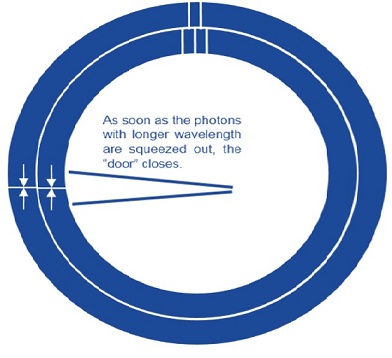Absolute zero in Casimir vacuum
Physics
DOI:
https://doi.org/10.14331/ijfps.2020.330133Keywords:
Casimir vacuum, Absolute zeroAbstract
Casimir vacuum has many peculiar properties, e.g. the speed of light can exceed c. This paper investigated the behavior of gas molecules in Casimir vacuum. Analysis and calculation indicate that we can get a new absolute zero in Casimir vacuum. This is due to the Hamiltonian, which equals the kinetic energy of the ensemble of gas molecules that is reduced in Casimir vacuum; therefore, the gas constant R is changed. This conclusion has great significance for the research of the vacuum properties.
Downloads
References
REFERENCES
Barton, G. (1990). Faster-than-c light between parallel mirrors The Scharnhorst effect rederived. Physics Letters B, 237(3-4), 559-562.
Bercegol, H., & Lehoucq, R. (2015). Vacuum friction on a rotating pair of atoms. Physical review letters, 115(9), 090402.
Chown, M. (1990). Can photons travel'faster than light'? New Sci., 32.
Fischer, J., Gerasimov, S., Hill, K., Machin, G., Moldover, M., Pitre, L., . Ugur, H. (2007). Preparative steps towards the new definition of the kelvin in terms of the Boltzmann constant. International journal of thermophysics, 28(6), 1753-1765.
Scharnhorst, K. (1990). On propagation of light in the vacuum between plates. Physics Letters B, 236(3), 354-359.
Scharnhorst, K. (1998). The velocities of light in modified QED vacua. Annalen der physik, 7(7‐8), 700-709.
Sonnleitner, M., Trautmann, N., & Barnett, S. M. (2017). Will a decaying atom feel a friction force? Physical review letters, 118(5), 053601.
Wilkens, M. (1994). Significance of Röntgen current in quantum optics: Spontaneous emission of moving atoms. Physical Review A, 49(1), 570.

Published
How to Cite
Issue
Section
License
Copyright (c) 2020 International Journal of Fundamental Physical Science

This work is licensed under a Creative Commons Attribution 4.0 International License.











